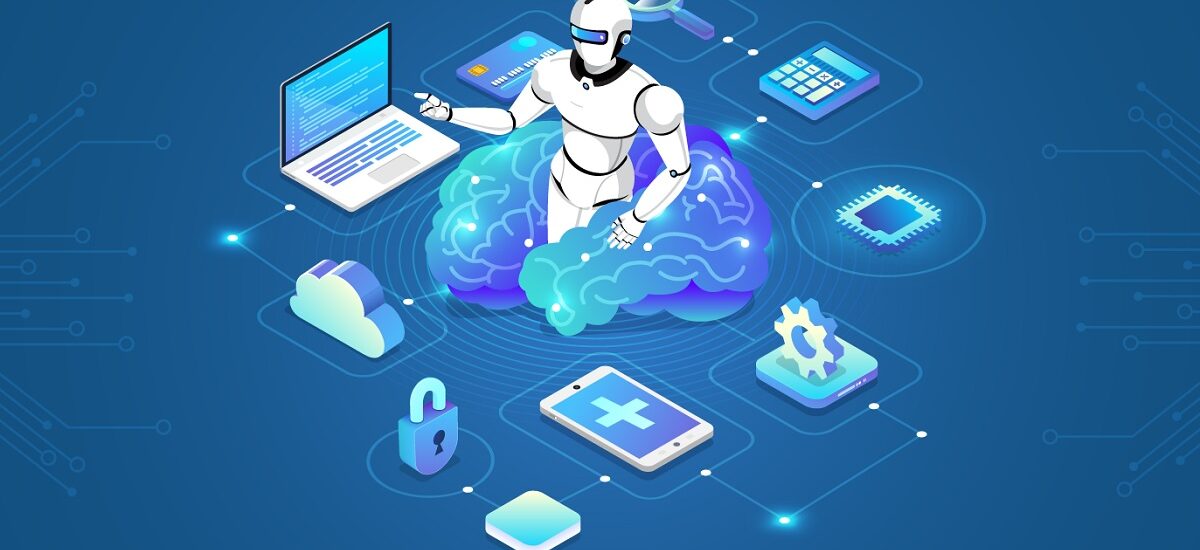Artificial Narrow Intelligence (ANI)
The HTML0 version of artificial narrow intelligence (ANI), or weak AI. It is a kind of artificial intelligence that can concentrate on only one particular issue or task at the same time. It is the current concept of the term artificial intelligence in general.
Narrow AI is not aware and is not a sentient. ANI is bound by strict programming rules for specific tasks. ANI is classified as insufficient since it can’t meet the human level of intelligence or learn and change in the same way that other types of AI could.
One illustration of the narrow AI is the smartphone assistants such as Bixby as well as Siri.
Artificial General Intelligence (AGI)
Artificial General Intelligence (AGI) also known as the strong AI is the reverse of the term ANI. Brooke Jessica Kaio explains AGI is a term used to describe machines that can perform human-like tasks. AGI is known as “human-like,” given that general AI can strategize and reason. As well as learn as well as communicate in a way that is in line with human functions and procedures. Furthermore, certain AGI machines can perceive (by the use of computers)) and manipulate things.
Big data
Brooke Jessica Kaio said Netflix collects massive amounts of information in a variety of ways. Including the way a user finds the show or movie (search function or suggestions) stars; searches. When or if viewers pause or end watching a program or show; date(s) the content was watched, and much more. They use this information to suggest new content to users and also to inform them of “what’s popular.” Which might influence some viewers to tune in to be at the forefront with the latest, hot fresh programs.
Computer vision
Computer vision occurs the process by which a computer processes images from images (JPEGs) and camera feeds. It can not only “see” its image(s). However, it also comprehends and processes the image it is viewing. If it is viewed in the context of human life computer vision would be to brain understanding the same way eyes are to seeing.
In essence, when a computer process raw visual input, like a JPEG file or camera feed. It is using computer vision to interpret the information it’s seeing. It’s easier to imagine computer vision as the component of the brain that process the data received by the eyes rather than the eye itself. These include color size, shape, and even classification.
The system must not only identify images by shape, type and color, and process. The information is very quickly since it is operating in real-time.
Data mining
The process of data mining is the process of sorting huge amounts of data to discover patterns that are recurring. As well as establishing relationship-solving connections. It is a mixed subset of statistics and computer science that’s sole goal is to obtain data through AI as well as transform it into useful data.
Data mining is a common practice within e-commerce with Amazon leading the game of collecting data. Amazon has a direct relationship with its customers and utilizes their data to present buyers with suggested merchandise. “Others” have purchased about the customer’s planned purchase (i.e. when you’re looking to buy this you’re likely to buy this). Amazon makes use of the data of its customers (what customers bought and the feedback they received on their experiences). To discover patterns in buying and determine what customers might enjoy based on similar customer data.
Deep Learning
It is an advanced learning method that teaches computers to learn by the repetition of. In the sense that deep learning can help machines gain the ability to simulate learning the way. That a human brain would by separating text, sound images, and text into different categories.
Examples of deep learning are present in a variety of technologies, including driverless cars as well as voice-based assistants. These particular examples employ deep learning techniques that learn from hundreds or even thousands of hours of videos images and samples. Other data through which the technology learns patterns to recognize.
For instance, driverless vehicles learn to operate and travel on roads by studying road patterns. As well as the driving habits of human drivers as well as other vehicles. Similar to voice assistants, they listen to hours of speech data of people who have different types of voices or languages. As well as speech patterns to master the art of replicating human speech.
Neural Networks
A neural network models itself on the human brain. By creating it as an artificial neural network using an algorithm that recognizes patterns. This algorithm permits computers to understand and learn from sensory data in the hopes of separating and clustering the data.
Brooke Jessica Kaio said one common job for neural networks involves the recognition of objects. The term “object recognition” refers to when a neural system is presented with a variety of objects. That is similar (street signs and images of animals etc.) to look at and study. It interprets what objects are and tries to recognize patterns in the objects, and eventually figures out the best way to classify any future content.
Convolutional Neural Networks (CNN)
Convolutional neural networks are a kind of neural network designed to analyze, classify, and cluster images making use of the multilayer perception. CNN helps in recognizing objects within scenes (think the objects in the larger picture, not just the object itself). As well as digitalized or handwritten text making use of optical character recognition (OCR) tools.
Generative Adversarial Network (GAN)
GANs are a kind of neural network that can create photos that look authentic at the very least, on a superficial scale for human eyes. GAN-generated photos take elements of photos and then transform the images into realistic-looking pictures of animals, people, and even locations.
The StyleGAN changes the aspects of what a person (or cats) might appear like, based on real images of cats and people. Incredibly assigning physical characteristics to an extremely high level of details (e.g. pores, skin color hairstyle eyes, the color of hair, and much more.)
Natural Processing of Language (NLP)
NLP (NLP) assists computers to interpret, process, and analyze human language as well as its features by using data from natural languages. NLP is employed to help reduce the gap between humans and computers. Who is conversing and being able to understand each other?
A prime instance of NLP can be seen in the speech-to-text conversion transcriptions of voicemail messages.
More Read: Ronald Trautman









